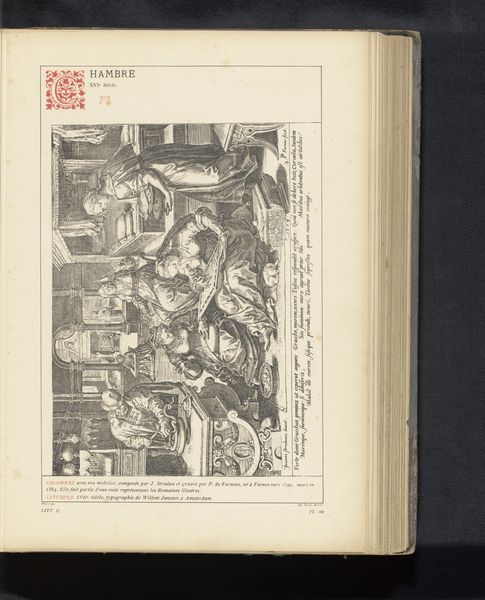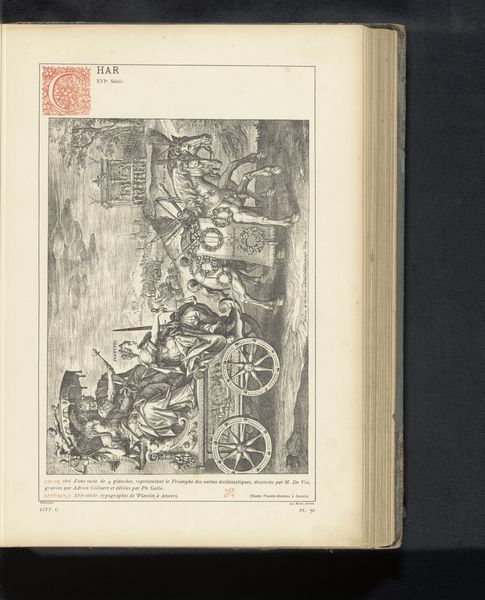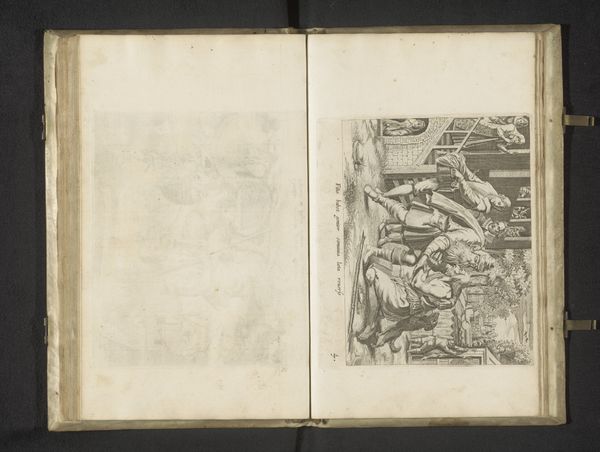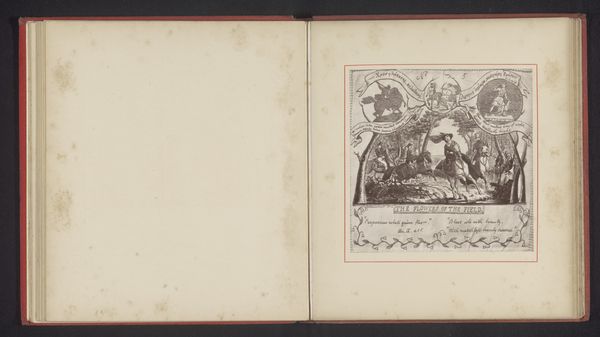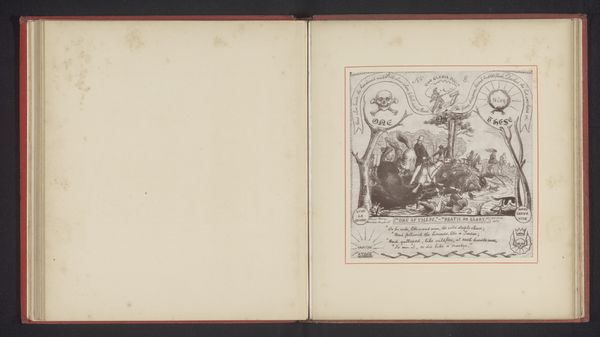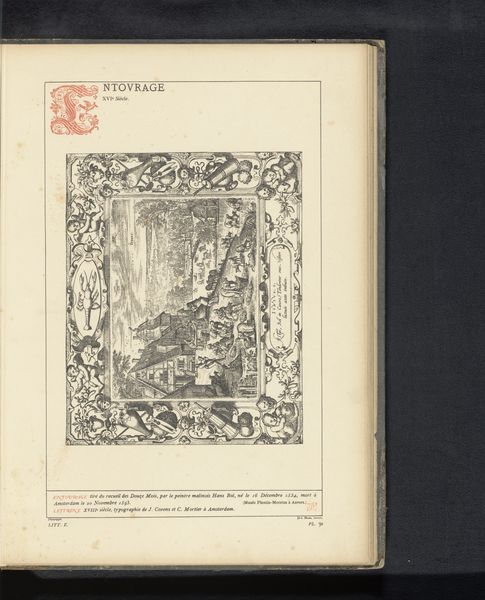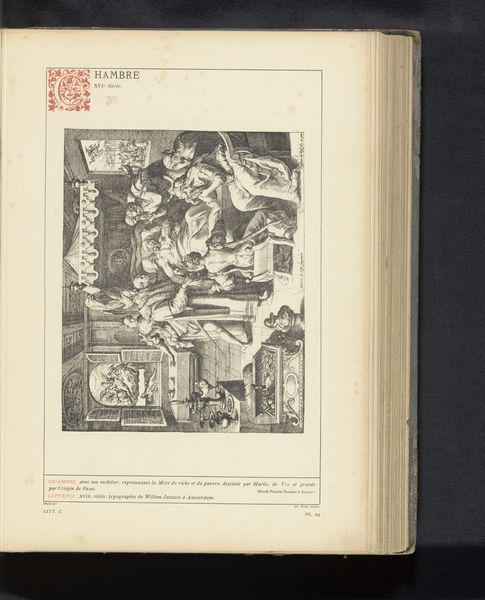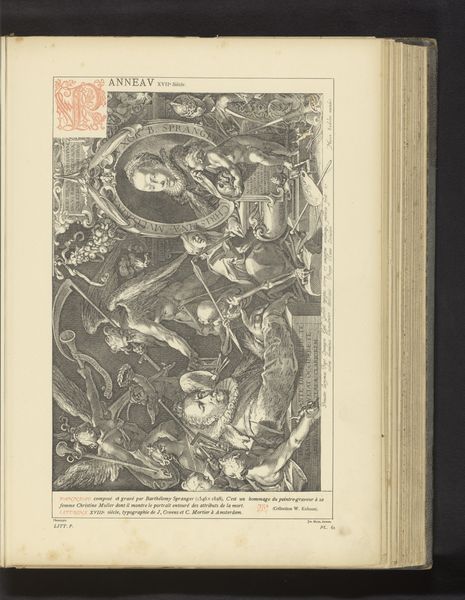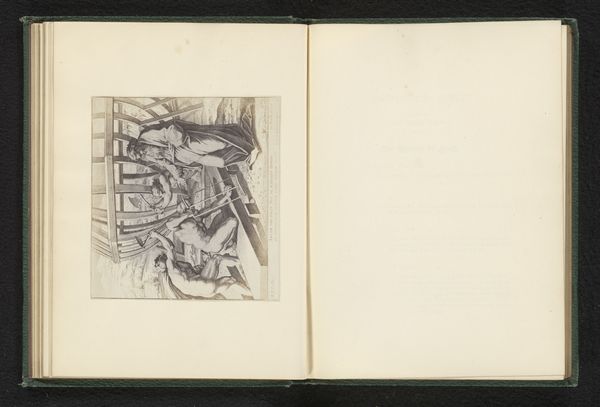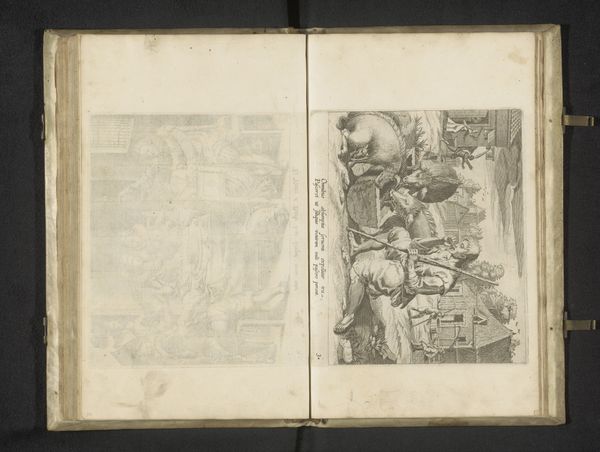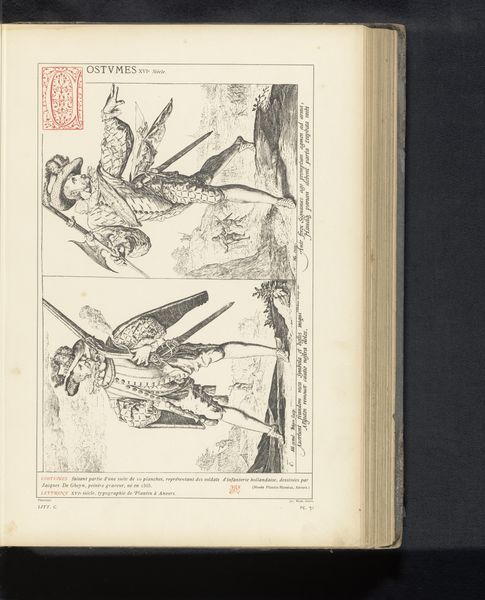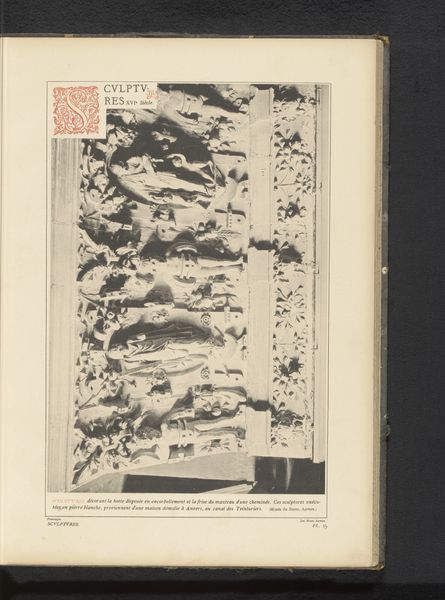
Reproductie van een kostuumprent van een Rooms-Duitse koning en keizer door Abraham de Bruyn before 1880
0:00
0:00
drawing, print, engraving
#
portrait
#
drawing
#
medieval
# print
#
costume
#
history-painting
#
engraving
Dimensions: height 342 mm, width 232 mm
Copyright: Rijks Museum: Open Domain
Curator: At first glance, the level of detail in this piece strikes me. The figures practically swim in textile patterns and ornamentation. Editor: Indeed! We're looking at a reproduction of a costume print by Abraham de Bruyn depicting a Holy Roman Emperor. It was made before 1880 and exists as an engraving. Its medium speaks to an era defined by detailed craftsmanship and painstaking methods of mechanical reproduction. Curator: It’s interesting how the composition uses these elaborate costumes to construct a hierarchy. The rigid symmetry almost reads like a symbolic blueprint. The clothing appears as a semiotic device, communicating the subject's elevated rank. Editor: Absolutely. De Bruyn and his contemporaries were operating in a world transitioning from craft to mass production, and I'm fascinated by how printmaking democratized images and, in some ways, these aspirational ideals. Curator: Observe how the line work contributes to this sense of structured elegance. The controlled hatching creates a remarkable sense of depth, rendering each garment in luxurious detail. Editor: The very act of engraving, the physical labor involved in incising those lines, speaks to a particular commitment to material process, almost devotional in its intensity and clearly situated in a workshop context. It represents countless hours spent translating an idea through very physical, painstaking means. Curator: One wonders, doesn’t one, how these precise details function in their cultural moment. They seem intended to underscore, through visual cues, the gravity and legitimacy of royal power. Editor: Perhaps its original intention was a celebration of imperial authority, but viewing it through a contemporary lens offers us a different perspective—a critical understanding of labor, materiality, and its potential political functions. Curator: Precisely, it’s this dialectic between design and dissemination, visuality and historical reality that makes this work particularly engaging. Editor: For me, I can't help but think about all the different hands that touched the copperplate used to create these prints—a collaborative network dedicated to translating power into something tangible, repeatable, and, eventually, consumable. Curator: A fruitful discussion, wouldn’t you agree? We’ve illuminated the delicate relationship between form and content within the art. Editor: Indeed. Examining production reveals more profound truths than just formal attributes alone.
Comments
No comments
Be the first to comment and join the conversation on the ultimate creative platform.
